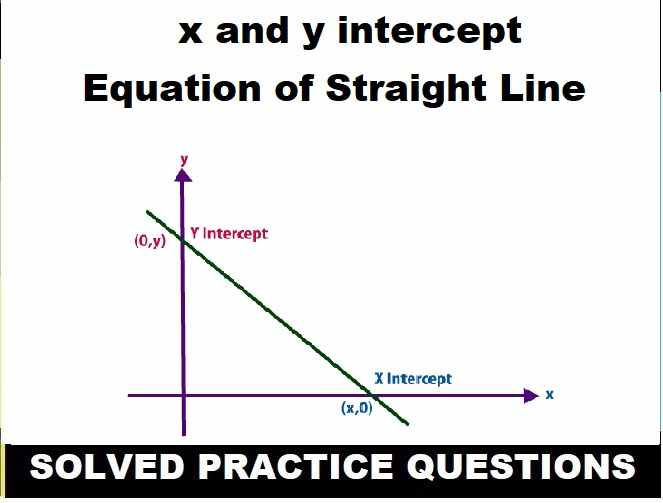Five Kingdom Classification Short Answer Biology Class-9 ICSE Selina Publishers Solutions Chapter-8. Step By Step ICSE Selina Concise Solutions of Chapter-8 Five Kingdom Classification with Exercise-8 including MCQs, Very Short Answer Type, Short Answer Type, Long Answer Type and Structured/Application Questions Solved . Visit official Website CISCE for detail information about ICSE Board Class-9.
Five Kingdom Classification Exe-8 Short Answer Biology Class-9 ICSE Concise Selina Publishers
| Board | ICSE |
| Publications | Selina Publication |
| Subject | Biology |
| Class | 9th |
| Chapter-8 | Five Kingdom Classification |
| Book Name | Concise |
| Topics | Solution of C. Short Answer Type |
| Academic Session | 2023-2024 |
C. Short Answer Type
Five Kingdom Classification Class-9 Biology Concise Solutions
Page 85
Question 1.
Name these:
(a) Five kingdoms under the recent scheme of classification.
(b) Five divisions of kingdom Plantae.
(c) Eight phyla of Invertebrates.
(d) Five classes of Chordata.
(e) Two types of fishes on the basis of their skeletons.
Answer:
(a) The five kingdoms according to the new classification are:
- Kingdom Monera
- Kingdom Protista
- Kingdom Fungi
- Kingdom Plantae
- Kingdom Animalia
(b) Five divisions of kingdom Plantae are:
- Thallophyta
- Bryophyta
- Pteridophyta
- Gymnosperms
- Angiosperms
(c) Eight phyla of Invertebrates are:
- Porifera
- Cnidaria
- Platyhelminthes
- Nematoda
- Annelida
- Arthropoda
- Mollusca
- Echinodermata
(d) Five classes of Chordata are:
- Pisces
- Amphibia
- Reptilia
- Aves
- Mammalia
(e) Two types of fishes on the basis of their skeletons are:
- Cartilaginous fishes
- Bony fishes
Question 2.
Define the terms:
(a) Species
(b) Clitellum
(c) Moulting
(d) Diaphragm
(e) Nocturnal animals
Answer:
(a) Species — Species means an organism of particular kind whose members can interbreed among themselves to produce fertile young ones.
(b) Clitellum — The clitellum is a specialized reproductive structure found in certain annelids, particularly in earthworms. It is a short cylindrical band of thick glandular skin that surrounds the body like a belt and is around one-third distance of the body from the front end in the segments 14-16.
(c) Moulting — The casting off and the regrowing of the exoskeleton is collectively called moulting. It occurs in Arthropods.
(d) Diaphragm — A muscular structure separating thorax and abdomen internally in mammals is called diaphragm.
(e) Nocturnal animals — Animals that are active during night are known as nocturnal animals.
Question 3.
Write the specific location and function of:
(a) Microscopic spicules or elastic spongin fibre
(b) Tentacles
(c) Parapodium
(d) Fins
(e) Feathers
Answer:
(a) Microscopic spicules or elastic spongin fibre.
Location — It forms the skeleton of Sponges.
Function — Structural support and defense against predators.
(b) Tentacles
Location — around mouth in Coelentrates.
Function — To catch food organisms.
(c) Parapodium
Location — Found in certain marine annelids. Usually located on either side of a segment, extending outward from the body wall. Function — Locomotion.
(d) Fins
Location — Found in Class Pisces (Fishes) organisms. They have fins instead of limbs.
Function — Swimming.
(e) Feathers
Location — Found in Class Aves (Birds) organisms. They have an exoskeleton of feathers.
Function — To facilitate flying.
Question 4.
Rearrange the following categories of classification in their proper sequence starting with the highest.
species, family, genus, class, order, phylum
Answer:
Phylum Class Order Family Genus Species
Question 5.
Rewrite the following scientific names correctly.
ficus religiosa (peepal), zea Mays (maize) and Bombyx Mori (silk moth).
Answer:
Ficus religiosa (Peepal)
Zea mays (Maize)
Bombyx mori (Silkmoth)
(Five Kingdom Classification Short Answer Class-9 ICSE)
Question 6.
Match the names of animal groups in Column I with the names of animals in column II.
| Column I (Group) | Column II (Animals) |
| Annelida | Pigeon |
| Porifera | Snake |
| Mollusca | Earthworm |
| Reptilia | Sponge |
| Amphibia | Octopus |
| Pisces | Trout |
| Mammal | Rabbit |
Which names are left out that do not match and why?
Answer:
| Column I | Column II |
| Annelida | Earthworm |
| Porifera | Sponge |
| Mollusca | Octopus |
| Reptilia | Snake |
| Pisces | Trout |
| Mammal | Rabbit |
Amphibia from Column I and Pigeon from column II are left out. They do not match as Pigeon comes under Class Aves and not Class Amphibia.
Question 7.
Give the scientific names of man, domestic cat, and peepal tree.
Answer:
| Man | Domestic cat |
Peepal tree |
| Homo sapiens |
Felis domesticus | Ficus religiosa |
Question 8.
Why are scientific names of living beings considered better than their common names?
Answer:
In science, people from different countries with different languages have to read about each others research. So, it was necessary to eliminate any possible confusion created by local names. Scientific names are based on certain rules which are universal. They are unique and can be used to identify an organism anywhere around the world. That is why, scientific names of living beings are considered better than their common names.
Question 9.
Mention any two drawbacks in classifying organisms under the old two kingdom classification.
Answer:
According to the ‘Two-Kingdom Classification’, proposed by Carolus Linnaeus in 1758, living organisms were classified into two broad kingdoms, Plants and Animals.
The drawbacks in classifying organisms under the old two kingdom classification are:
- Bacteria were kept in Kingdom Plantae. These organism shave no chlorophyll and do not carry out photosynthesis. Bacteria do not have a definite nucleus nor a nuclear membrane nor chromosomes.
- Fungi were kept in Kingdom Plantae. Bread mould is a multicellular fungi. However, it does not possess roots, stem and leaves, lacks chlorophyll and does bear any flowers, fruits and seeds like plants.
Question 10.
All humans on earth today may differ widely in their facial features, colour, height, etc. Yet, they belong to a single species Homo sapiens. Give one reason why they are not considered belonging to different species.
Answer:
Species means an organism of a particular kind whose members can interbreed among themselves to produce fertile young ones.
All humans on the earth today may differ widely in their facial features, colour, height, etc. Yet, they belong to a single species Homo sapiens because they can interbreed among themselves and produce a normal off spring.
Question 11.
Give any one difference between each of the following :
(a) Insecta and Arachnida,
(b) Flatworm and Roundworm,
Answer:
(a) difference between Insecta and Arachnida
| Insecta | Arachnida |
| Have three pairs of legs | Have four pairs of legs |
(b) difference between Flatworm and Roundworm
| Flatworm | Roundworm |
| Dorso-ventrally flattened | Cylindrical in
shape and are tapered at both ends
|
(Five Kingdom Classification Short Answer Class-9 ICSE)
Question 12.
Mention any one major similarity and one major difference in the following pairs of animals:
(a) Insects and Birds
(b) Whales and Fishes
(c ) Snakes and Earthworms
(d) Bat and Pigeon
(e) Cuttlefish and Dogfish
(f) Wall lizard and Frog
Answer:
(a) Similarity and Difference between Insects and Birds
| Similarity | Difference | |
| Have wings | Insects | Birds |
| Invertebrates | Vertebrates | |
(b) Similarity and Difference between Whales and Fishes
| Similarity | Difference | |
| Aquatic | Whales | Fishes |
| Have lungs for breathing | Have gills for breathing | |
(c)Similarity and Difference between Snakes and Earthworms
| Similarity | Difference | |
| Do not have any limbs | Snakes | Earthworm |
| Vertebrates | Invertebrates | |
(d) Similarity and Difference between Bat and Pigeon
| Similarity | Difference | |
| Breathe through lungs | Bat | Pigeon |
| Have external ears | Have internal ears | |
(e) Similarity and Difference between Cuttlefish and Dogfish
| Similarity | Difference | |
| Marine animals | Cuttlefish | Dogfish |
| Invertebrates | Vertebrates | |
(f) Similarity and Difference between Wall lizard and Frog
| Similarity | Difference | |
| Cold-blooded animals | Wall lizard | Frog |
| Completely adapted to life on land | Live partly on land and partly in water | |
— : End of Five Kingdom Classification C. Short Answer Class-9 ICSE Biology Solutions :–
Return to Return to Concise Selina ICSE Biology Class-9
Thanks
Please share with your friends


